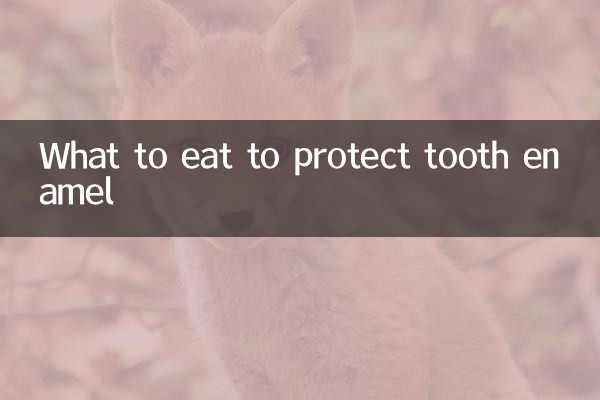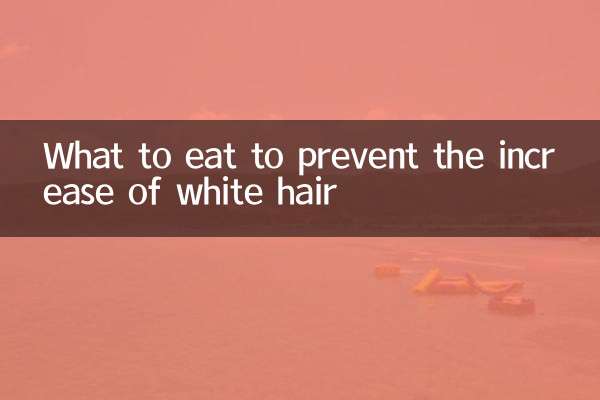What to eat to protect tooth enamel
Tooth enamel is the hard outermost protective layer of teeth. Once damaged, it is difficult to repair naturally. In recent years, with the increase in health awareness, how to protect tooth enamel through diet has become a hot topic. The following is a list of tooth-protecting foods that have been hotly discussed on the Internet in the past 10 days and related scientific evidence to help you maintain dental health through your daily diet.
1. Common causes of tooth enamel damage

Before learning about tooth-protecting foods, first understand what habits can damage tooth enamel:
| risk factors | Specific performance |
|---|---|
| high sugar diet | Sugar is broken down by bacteria and produces acid that corrodes enamel |
| acidic food | Citrus and carbonated drinks directly soften enamel |
| Brushing teeth excessively | Wedge-shaped defects caused by lateral brushing with a hard-bristled toothbrush |
| Bruxism | Mechanical wear caused by teeth grinding at night |
2. Core nutrients that protect tooth enamel
The following nutrients have been shown to enhance the acid resistance of tooth enamel:
| Nutrients | Mechanism of action | recommended daily amount |
|---|---|---|
| Calcium | Main component of enamel, promotes remineralization | 800-1200mg |
| Phosphorus | Combines with calcium to form hydroxyapatite | 700mg |
| Vitamin D | Promote calcium and phosphorus absorption | 10μg |
| Antioxidants | Reduce gum inflammation and indirectly protect enamel | no fixed standard |
3. Recommended food list
Based on nutritional research and dental expert advice, the following food combinations provide complete protection:
| food category | best choice | Food recommendations |
|---|---|---|
| dairy products | Sugar-free yogurt, cheese | Eat after meals to neutralize acidity |
| High fiber fruits and vegetables | celery, apple | Eating raw stimulates saliva secretion |
| nuts seeds | Almonds, sesame seeds | A handful a day |
| protein | Salmon, eggs | Provides vitamin D |
| drinks | Green tea, boiled water | Alternative to carbonated drinks |
4. "Pseudo-healthy" foods that you need to be wary of
Some of the "healthy foods" that have been popularly promoted on the Internet recently may have hidden risks:
| food | Potential hazards | alternative |
|---|---|---|
| lemonade | pH value 2.0-2.5 strongly acidic | Switch to drinking from a straw |
| Dried fruits | High in sugar and sticky to teeth | Fresh fruit alternatives |
| Soak food in vinegar | Long-term consumption causes acid corrosion | Control ≤2 times per week |
5. Scientific dental care diet plan
Based on the recent recommendations of the Journal of Oral Preventive Medicine, an example of a three-day diet is given:
| Meals | Day1 | Day2 | Day3 |
|---|---|---|---|
| breakfast | Whole wheat bread + cheese + green tea | Oatmeal + black sesame seeds | Egg custard + almond milk |
| Extra meal | apple chunks | carrot sticks | sugar free yogurt |
| lunch | Steamed salmon + broccoli | Beef stew with tofu | Fried kale with shrimps |
| dinner | Fried Chicken with Mushrooms | Seaweed and egg drop soup | Sautéed Spinach |
6. Latest research trends
In July 2023, a sub-journal of Nature published a breakthrough discovery:
1. Containing polyphenols (such as cocoa, berries) can inhibit the activity of cariogenic bacteria
2. Probiotics in fermented foods can regulate oral microbial balance
3. Chewing sugar-free gum for 20 minutes after a meal increases saliva secretion by 41%.
Protecting tooth enamel requires long-term adherence to correct eating habits, combined with regular oral examinations. Remember:Prevention is better than cure, start investing in your teeth with your next meal!

check the details

check the details